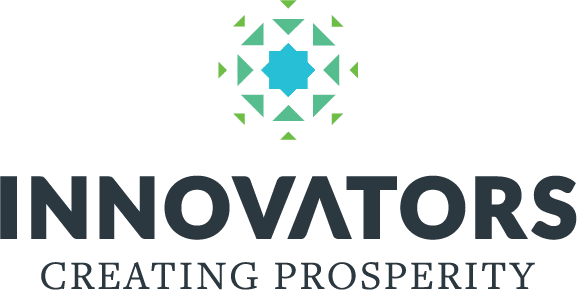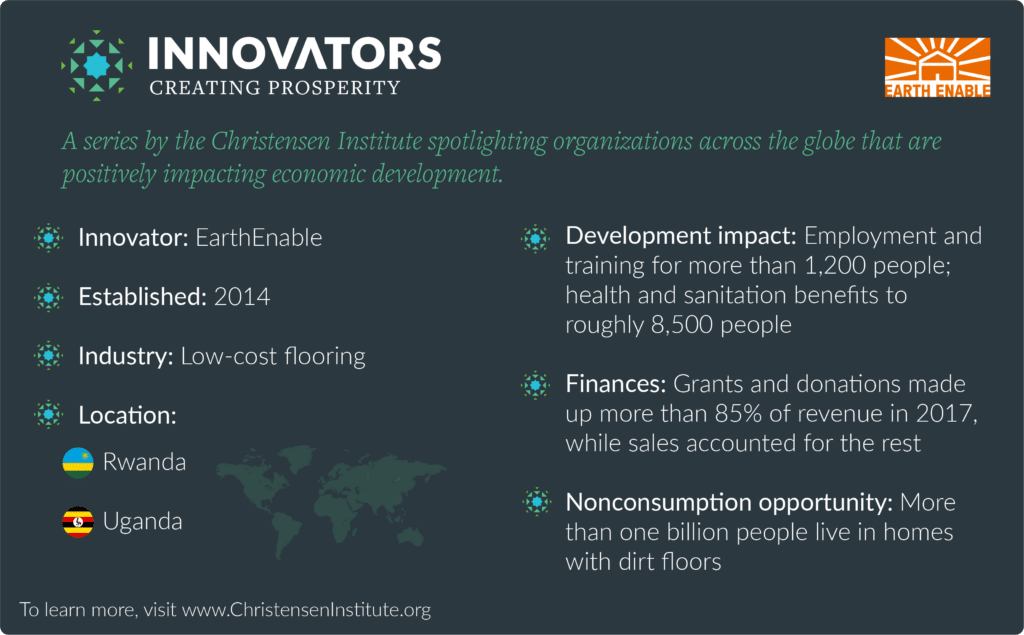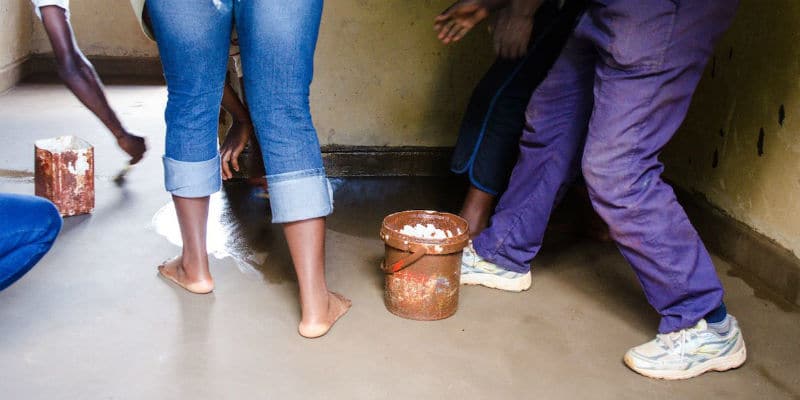Welcome to our Innovators Creating Prosperity series, spotlighting organizations across the globe that are positively impacting economic development.

More than half of Africa’s 1.2 billion people live in rural areas where problems often arise due to the poor housing conditions in which many people live. In Rwanda, for instance, more than 75% of the two and a half million homes have dirt floors. This means that when it rains, puddles of muddy water can easily become breeding grounds for mosquitoes. In addition, dirt floors, as the name implies, are dirty and can contaminate people’s belongings.
The alternative solution, investing in concrete floors, is too expensive for most people in Rwanda and across sub-Saharan Africa, where the per capita income is approximately $705, and $1,461, respectively. In Rwanda, for example, it would cost the average person several months’ worth of wages to install concrete flooring. Fortunately, one nonprofit has identified this as an opportunity to create a new market for affordable flooring.
For roughly $3 a square meter, EarthEnable provides affordable hard and earthen floors made from rocks, sand, clay, and water—all locally sourced materials—and sealed with a proprietary oil that hardens to form a plastic-like resin. An EarthEnable floor is 75% cheaper than concrete, and is also having an impact on the health of its customers as 54% of families are reporting positive health differences in the first month after installation. But its impact goes beyond that—the organization is also providing much-needed jobs to locals in the community, and generating tax-revenue for the government through each sale.
We often talk about the important role that private enterprises must play in creating markets and fostering economic development. But EarthEnable is a powerful example of how nonprofits can also be impactful through market-creating innovation. In this installment of our Innovators Creating Prosperity series, we chatted with EarthEnable co-founder Gayatri Datar about the origins of her organization and its impact on prosperity in Rwanda.
1. Where did you get your idea? How did you know there was opportunity?
In 2013 I visited Rwanda through a course at Stanford where my classmates and I were tasked with designing a product or a service that would make homes or communities healthier. We first sought to understand how the typical home affected physical and emotional health outcomes and were shocked to discover the significant health problems that dirt floors cause. Eliminating a dirt floor from the home results in dramatic reductions in childhood asthma, diarrhea, malnutrition, and parasitic infestations. We realized that we could change lives if we found a way to floor Rwanda.
Theory insight: In low- and middle-income countries, opportunities for innovation are often masked as struggles. In this case, EarthEnable was able to unlock significant market-creation potential in Rwanda by identifying the struggles associated with dirt flooring.
2. What was your initial target market?
We focused on the rural poor in Rwanda initially, though we have since begun to expand and scale across East Africa, launching in Uganda in 2017.
Theory insight: While targeting people living in poverty may seem unattractive, the potential for growth within low- and middle-income countries is immense as a majority of the continent still lacks access to basic products and services such as affordable hard flooring.
3. What did your target market do/use before your innovation was available?
Prior to EarthEnable the majority of Rwandans had two flooring choices: concrete, or dirt. But concrete is too expensive for most, so we’ve had to compete with the “nonconsumption” of floors.
When competing against nonconsumption, there is inherently a lack of knowledge about the product. In our case, we had developed a flooring solution that people had no previous experience of—they knew dirt floors, and they knew concrete floors. As a result, we struggled in clearly defining the value proposition of our product and fully understanding the preferences of our customers. For example, given that floors are an inherently aspirational product, we needed to test whether people buy the floor because it’s a much better and cheaper alternative to dirt, or whether the perceived value around aesthetics and texture actually mattered far more than cost. We are in the process of overcoming this challenge by reevaluating the way that we pitch our product to determine what resonates most with our customers.
4. Where did you raise funding, and what advice would you give others regarding fundraising?
As a nonprofit we have been fortunate to receive funding and support from a number of generous philanthropists, as well as institutional funding from USAID and Grand Challenges Canada. A number of fellowships, prizes, and accelerators supported our growth and development in the early stages.
My advice is to get feedback from people who say no, and improve your narrative accordingly. If you really need cash and you aren’t getting rejected 80% of the time, you aren’t asking enough. Tell your story and make sure you are highlighting your personal potential to make something a reality. No one invests in just an idea, it’s about whether the person has the grit and the resilience to make the idea a reality.
5. Innovators often feel that the lack of an enabling environment in emerging markets—poor infrastructure, inadequate institutions, and little government support—is insurmountable. How did you overcome these challenges?
No challenge is insurmountable if you are delivering something that people want. It could mean that you need to vertically integrate when you wanted to focus, or that you need to build patience when you wanted to move fast, but this is part of the thrill of doing something that’s never been done before. Rwanda is well known and established as a great place to do business, so we feel privileged to partner closely with the Government of Rwanda. We recently signed a Memorandum of Understanding with the Ministry of Local Government to support partnerships with local district governments as we seek to expand our work across the country.
6. What can other innovators take away from your experience? Is there anything you’d do differently?
One thing I’d do differently is hire a management team much earlier in order to personally shift from doer to manager, to leader, much more quickly. I think we lost about a year to a year and a half by not having the right team in place earlier.
We’ve also learned that it’s important to be close to your customers when trying to develop a new product. We moved twice as fast when we shifted our headquarters to the village rather than the capital. In addition to our closeness to customers, our grit and flexibility allowed us to change our business model five times. Finally, it’s important to prevent your organization from becoming overly bureaucratic, particularly when operating in many geographies with a large head count. Oftentimes, our customers and field staff have the answers we need—do not allow yourself to keep making decisions that you are no longer best-placed to make.
Theory insight: Innovators seeking to create new markets should start with an emergent strategy—one that develops over time in the absence of a clear and specific blueprint. An emergent strategy enables innovators to learn from customers and change their business model quickly. After innovators understand the progress their customers are trying to make and have developed an appropriate business model, they can then implement a deliberate strategy in which they move from primarily learning to executing.



